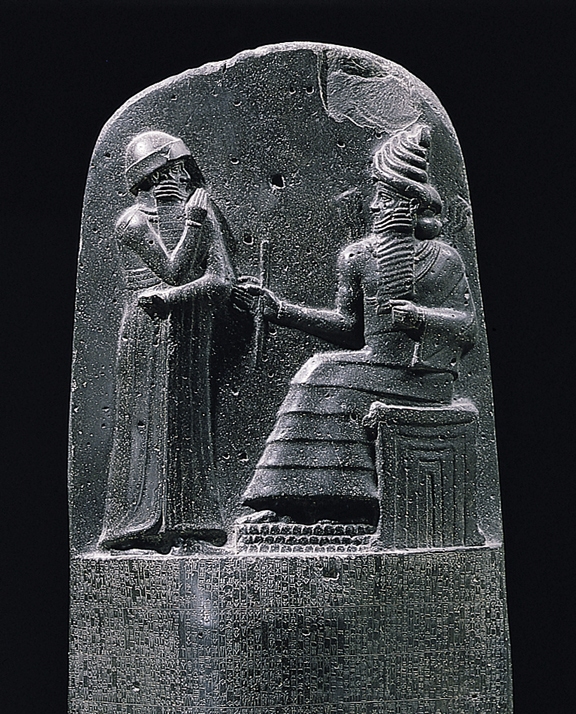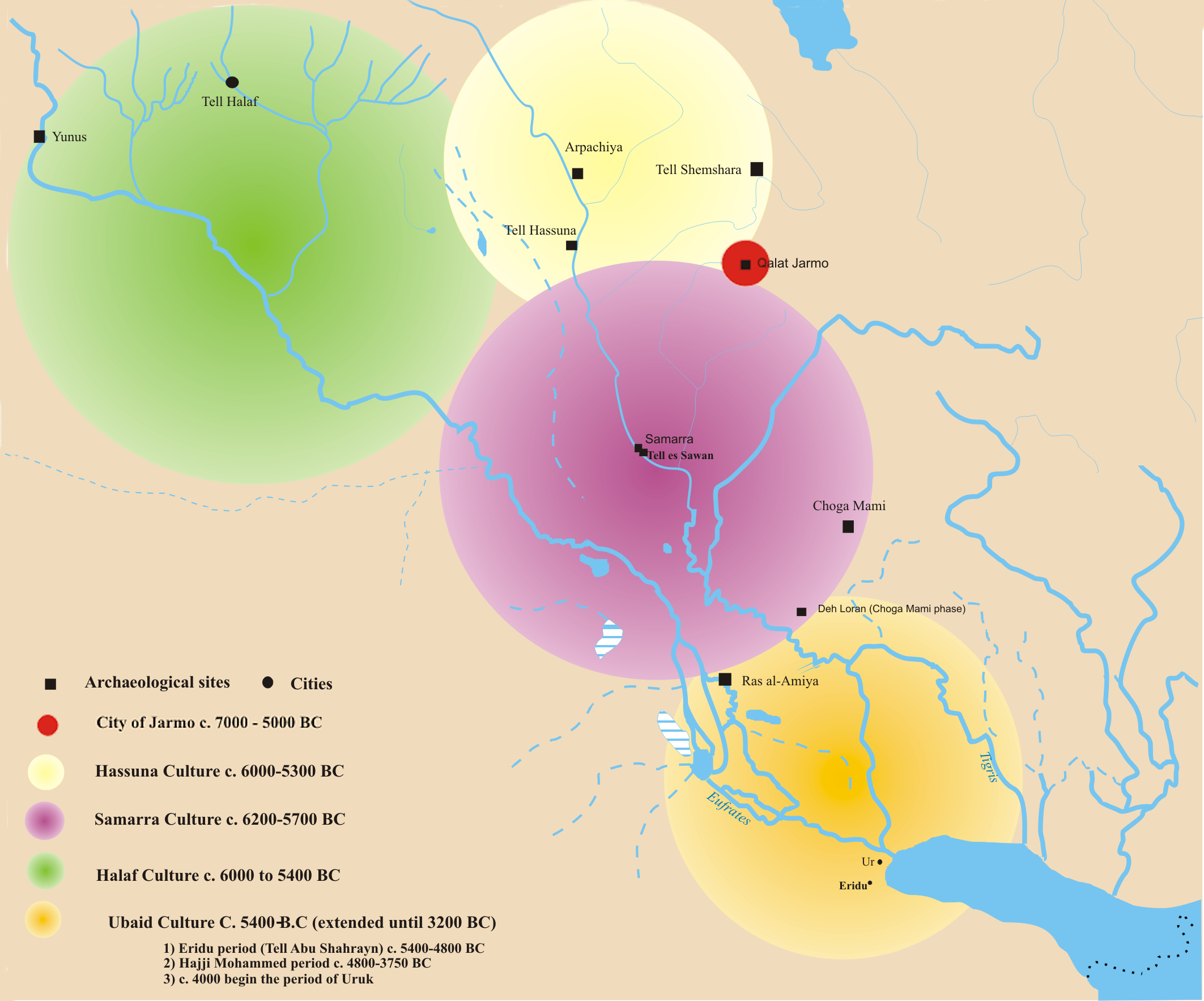|
Umū Dabrūtu
Umū dabrūtu, inscribed ''u''4''-mi da-ab-ru-ti'' and meaning "Violent Storms" (lit. "fierce day") was an ancient Mesopotamian mythical beast, demon or species of creature and one of the eleven monsters created by Tiamat, Tiāmat in her conflict with the younger gods in the Epic of Creation, Enûma Eliš. Its form is unknown but was probably a composite beast like its companions. Mythology The Enûma Eliš relates that the Umū dabrūtu and its companions "bore cruel weapons, without fear of the fight". Their demise, however, was complete as Marduk is said to have overcome them and "broke their weapons and bound them (the creatures) to his feet".The ''enūma eliš'' aeTACT/ref> His transformation of them into benevolent apotropaic symbols to guard the gate of the Apsû, provides a precedent which would be imitated on the doorways of temples, palaces and homes. References {{DEFAULTSORT:Umu dabrutu Characters in the Enūma Eliš Mesopotamian legendary creatures Mesopotamia ... [...More Info...] [...Related Items...] OR: [Wikipedia] [Google] [Baidu] |
Mesopotamia
Mesopotamia ''Mesopotamíā''; ar, بِلَاد ٱلرَّافِدَيْن or ; syc, ܐܪܡ ܢܗܪ̈ܝܢ, or , ) is a historical region of Western Asia situated within the Tigris–Euphrates river system, in the northern part of the Fertile Crescent. Today, Mesopotamia occupies modern Iraq. In the broader sense, the historical region included present-day Iraq and Kuwait and parts of present-day Iran, Syria and Turkey. The Sumerians and Akkadians (including Assyrians and Babylonians) originating from different areas in present-day Iraq, dominated Mesopotamia from the beginning of written history () to the fall of Babylon in 539 BC, when it was conquered by the Achaemenid Empire. It fell to Alexander the Great in 332 BC, and after his death, it became part of the Greek Seleucid Empire. Later the Arameans dominated major parts of Mesopotamia (). Mesopotamia is the site of the earliest developments of the Neolithic Revolution from around 10,000 BC. It has been identi ... [...More Info...] [...Related Items...] OR: [Wikipedia] [Google] [Baidu] |
Tiamat
In Mesopotamian religion, Tiamat ( akk, or , grc, Θαλάττη, Thaláttē) is a primordial goddess of the sea, mating with Abzû, the god of the groundwater, to produce younger gods. She is the symbol of the chaos of primordial creation. She is referred to as a woman and described as "the glistening one". It is suggested that there are two parts to the Tiamat mythos. In the first, she is a creator goddess, through a sacred marriage between different waters, peacefully creating the cosmos through successive generations. In the second Chaoskampf Tiamat is considered the monstrous embodiment of primordial chaos. Some sources identify her with images of a sea serpent or dragon. In the '' Enûma Elish'', the Babylonian epic of creation, Tiamat bears the first generation of deities; her husband, Apsu, correctly assuming that they are planning to kill him and usurp his throne, later makes war upon them and is killed. Enraged, she also wars upon her husband's murderers, b ... [...More Info...] [...Related Items...] OR: [Wikipedia] [Google] [Baidu] |
Marduk
Marduk (Cuneiform: dAMAR.UTU; Sumerian: ''amar utu.k'' "calf of the sun; solar calf"; ) was a god from ancient Mesopotamia and patron deity of the city of Babylon. When Babylon became the political center of the Euphrates valley in the time of Hammurabi (18th century BC), Marduk slowly started to rise to the position of the head of the Babylonian pantheon, a position he fully acquired by the second half of the second millennium BCE. In the city of Babylon, Marduk was worshipped in the temple Esagila. Marduk is associated with the divine weapon Imhullu. His symbolic animal and servant, whom Marduk once vanquished, is the dragon Mušḫuššu. "Marduk" is the Babylonian form of his name. The name ''Marduk'' was probably pronounced ''Marutuk''. The etymology of the name ''Marduk'' is conjectured as derived from ''amar-Utu'' ("immortal son of Utu" or "bull calf of the sun god Utu"). The origin of Marduk's name may reflect an earlier genealogy, or have had cultural ties to the anc ... [...More Info...] [...Related Items...] OR: [Wikipedia] [Google] [Baidu] |
Characters In The Enūma Eliš
Character or Characters may refer to: Arts, entertainment, and media Literature * ''Character'' (novel), a 1936 Dutch novel by Ferdinand Bordewijk * ''Characters'' (Theophrastus), a classical Greek set of character sketches attributed to Theophrastus Music * ''Characters'' (John Abercrombie album), 1977 * ''Character'' (Dark Tranquillity album), 2005 * ''Character'' (Julia Kent album), 2013 * ''Character'' (Rachael Sage album), 2020 * ''Characters'' (Stevie Wonder album), 1987 Types of entity * Character (arts), an agent within a work of art, including literature, drama, cinema, opera, etc. * Character sketch or character, a literary description of a character type * Game character (other), various types of characters in a video game or role playing game ** Player character, as above but who is controlled or whose actions are directly chosen by a player ** Non-player character, as above but not player-controlled, frequently abbreviated as NPC Other uses in ... [...More Info...] [...Related Items...] OR: [Wikipedia] [Google] [Baidu] |
Mesopotamian Legendary Creatures
Mesopotamia ''Mesopotamíā''; ar, بِلَاد ٱلرَّافِدَيْن or ; syc, ܐܪܡ ܢܗܪ̈ܝܢ, or , ) is a historical region of Western Asia situated within the Tigris–Euphrates river system, in the northern part of the Fertile Crescent. Today, Mesopotamia occupies modern Iraq. In the broader sense, the historical region included present-day Iraq and Kuwait and parts of present-day Iran, Syria and Turkey. The Sumerians and Akkadians (including Assyrians and Babylonians) originating from different areas in present-day Iraq, dominated Mesopotamia from the beginning of written history () to the fall of Babylon in 539 BC, when it was conquered by the Achaemenid Empire. It fell to Alexander the Great in 332 BC, and after his death, it became part of the Greek Seleucid Empire. Later the Arameans dominated major parts of Mesopotamia (). Mesopotamia is the site of the earliest developments of the Neolithic Revolution from around 10,000 BC. It has been i ... [...More Info...] [...Related Items...] OR: [Wikipedia] [Google] [Baidu] |
Mesopotamian Demons
Mesopotamia ''Mesopotamíā''; ar, بِلَاد ٱلرَّافِدَيْن or ; syc, ܐܪܡ ܢܗܪ̈ܝܢ, or , ) is a historical region of Western Asia situated within the Tigris–Euphrates river system, in the northern part of the Fertile Crescent. Today, Mesopotamia occupies modern Iraq. In the broader sense, the historical region included present-day Iraq and Kuwait and parts of present-day Iran, Syria and Turkey. The Sumerians and Akkadians (including Assyrians and Babylonians) originating from different areas in present-day Iraq, dominated Mesopotamia from the beginning of written history () to the fall of Babylon in 539 BC, when it was conquered by the Achaemenid Empire. It fell to Alexander the Great in 332 BC, and after his death, it became part of the Greek Seleucid Empire. Later the Arameans dominated major parts of Mesopotamia (). Mesopotamia is the site of the earliest developments of the Neolithic Revolution from around 10,000 BC. It has been identifie ... [...More Info...] [...Related Items...] OR: [Wikipedia] [Google] [Baidu] |



